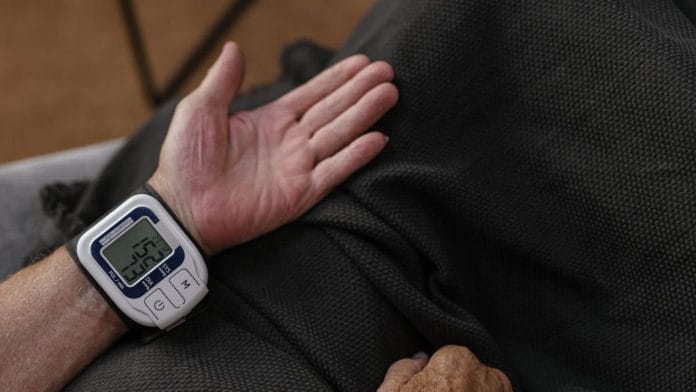New Delhi: Patients suffering from both hypertension and diabetes should adopt adjunct therapy (treatment used together with primary treatment) such as yoga, regularly monitor their blood pressure, and go for dual therapies, which means they should combine widely used blood pressure treatments with specific newer drugs to maximise benefits.
These are part of the first-ever India-specific guidelines, issued by the Association of Physicians of India (API) in collaboration with the Indian College of Physicians (ICP), for those struggling with both high blood pressure and diabetes, which are among the leading non-communicable or lifestyle diseases in India. They contribute significantly to morbidity and mortality in the country.
The API and ICP are two of the largest professional networks of physicians.
The guidelines were published Monday in the Journal of the Association of Physicians of India.
The new guidelines have been developed in collaboration with experts from India and other countries in the Southeast Asian region to ensure that the recommendations are tailored to the specific challenges faced by patients in these regions.
A large study published last year, and carried out by the Indian Council of Medical Research (ICMR) in association with the Madras Diabetes Research Foundation (MDRF), showed that there are 31.5 crore people with hypertension in India, and 10.1 crore diabetics.
Research indicates that over 50 percent of hypertensive patients in India are also diagnosed with diabetes, highlighting a significant overlap that poses unique challenges in patient care.
So far, doctors primarily followed Western guidelines (mainly followed in the United States and Europe) in managing patients with hypertension and diabetes.
“The new guidelines were issued due to the alarmingly high cases of coexistence of hypertension and diabetes in the country,” Dr Jyotirmoy Pal, Professor, Department of General Medicine, College of Medicine & Sagore Dutta Hospital, Kolkata, and president-elect of the API, told ThePrint.
While global guidelines provide a framework for managing hypertension in diabetes, the Indian and Southeast Asian populations differ significantly from Western populations in terms of ethnicity, clinical challenges and drug responses, he said.
Given that a majority of these cases are managed at the primary care level, a comprehensive management protocol is deemed essential, Dr Pal added.
“The aim is to provide healthcare professionals with clear, actionable steps to effectively manage both conditions simultaneously while considering the safety and efficacy of various treatment options,” the professor said.
Also read: Govt nod to 1st RSV drug for all kids under 2 yrs. Here’s what you need to know
Focus on mix of measures
Hypertension in individuals with diabetes greatly increases the risk of cardiovascular complications like heart diseases, stroke and peripheral artery disease, according to experts.
Assessing target organ damage and overall cardiovascular risk is essential to guide treatment intensity and preventive measures.
Regular screening for microalbuminuria (higher than normal albumin protein in urine) is recommended to identify those at risk of kidney dysfunction and future cardiovascular disease. Using specialised risk scores developed for individuals with diabetes is preferred over general population risk scores for more accurate cardiovascular risk assessment.
“The guidelines released significantly advocate for advanced hypertension and diabetes management by introducing newer antidiabetic drugs for improved glycemic control and cardiovascular protection,” Dr Pal said.
Given the high cardiovascular risk in diabetes, the new guidelines recommend dual antihypertensive therapy, specifically combining Angiotensin Receptor Blockers (ARBs) with Calcium Channel Blockers (CCBs) — two different classes of hypertension drugs — for their effectiveness in reducing blood pressure and helping prevent cardiovascular complications.
ARBs are used to treat high blood pressure, heart failure and kidney disease, and often administered after a heart attack. CCBs limit cells’ use of calcium, helping treat hypertension and heart problems.
A notable inclusion in the new guidelines is the recommendation of newer CCBs, with a specific focus on Cilnidipine, a hypertension drug.
Introduced in India in 2007, Cilnidipine has shown promise in offering multiple benefits, not only by helping reduce blood pressure, but also by protecting crucial organs, especially the kidneys.
The guidelines suggest combining Cilnidipine with ARBs to maximise these benefits, while also considering patient-specific factors and comorbidities.
The guidelines also say that Renin-angiotensin system (RAS) blockers should be integral to the treatment regimen, given their proven efficacy in randomised controlled trials for preventing and slowing the progression of diabetic kidney complications.
RAS is an endocrine system that regulates blood pressure and fluid balance, and RAS blockers help treat hypertension, heart disease, and kidney failure. (I added this)
It also recommends use of newer antidiabetic agents like sodium-glucose cotransporter-2 (SGLT2) inhibitors and glucagon-like peptide-1 (GLP-1) receptors to improve glycemic control and to confer macro- and micro-vascular protection.
The guidelines also mention conditions where patients should be further referred to specialists for better management of the disease.
Another key feature of the new guidelines is the emphasis on using multiple methods to detect and measure hypertension, including home blood pressure monitoring.
This approach empowers patients to play an active role in managing their condition, improving adherence to treatment and long-term outcomes, the guidelines say.
In addition, the guidelines advocate for the integration of lifestyle modifications with therapies to enhance treatment outcomes. For the first time, yoga is recommended as an adjunct therapy for managing hypertension in guidelines.
As part of the guidelines, doctors have also been advised to recommend yoga’s holistic benefits to patients for overall health outcomes.
Last month, the Cardiological Society of India (CSI) — the largest network of cardiologists — had released the first ever Indian guidelines for the management of dyslipidemia, the biggest risk factor behind life-threatening cardiovascular diseases like strokes and heart attacks.
(Edited by Radifah Kabir)
Also read: ‘Dawn of new era in medicine’ — AI helps scientists develop safe form of antibiotic produced by pigs






